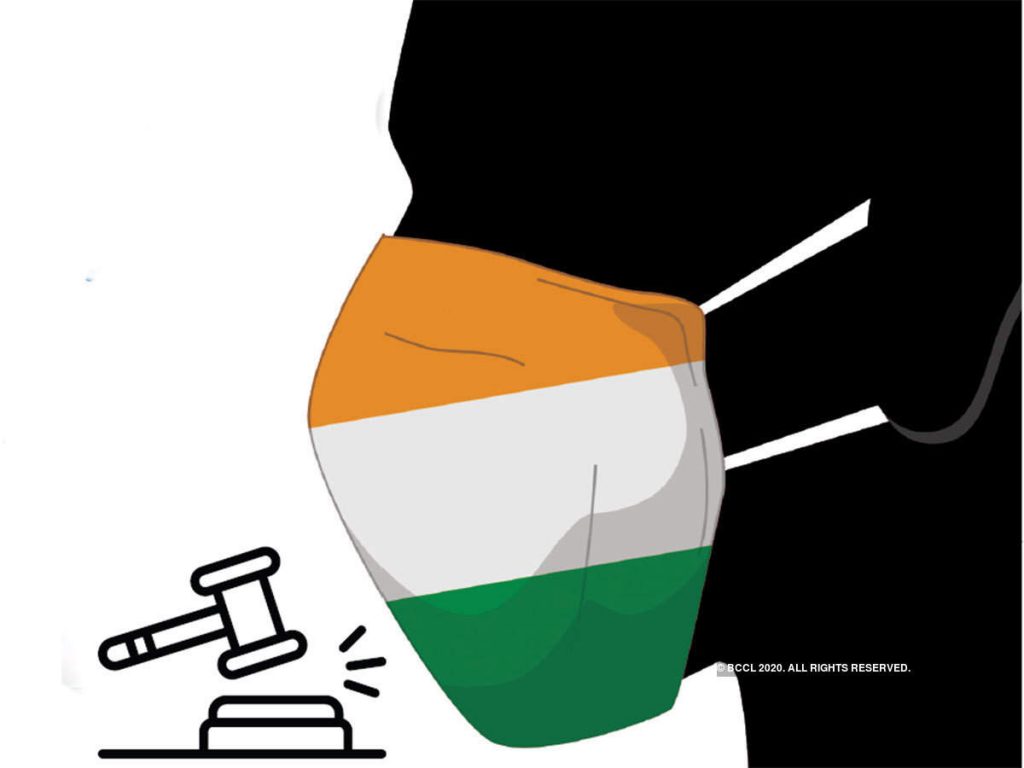Introduction:
The stated object and purpose of the Disaster Management Act is to manage the Disasters, including preparation of mitigation strategies, capacity building, and more. The Central The Government has now included the Covid-19 outbreak as “Notified The Disaster” as a “critical medical condition or pandemic situation”. India is facing a massive health crisis with coronavirus disease which has originated from China. So this article will focus on the implementation of the DMA in the current situation.
Lockdown Under The Disaster Management:
In furtherance of the declaration of nationwide lockdown and as per Section 6 (2) (1) of the Disaster Management Act, the guidelines issued have established that all types of transport services will not be operational during this period. Commercial and private establishments shall remain closed, except for ration shops, banks, ATMs, media services, and telecommunication companies. The guidelines also said under paragraph 17 that any person who violates these containment measures will be liable under Sections 51 to 60 (Offenses and Penalties) of the Disaster Management Act, and under Section 188 of the Indian Penal Code which creates the punishment for disobedience to order duly promulgated by a public servant[1]. The nationwide lockdown (the term “lockdown” still not defined) is a creation of executive decree sustained by series of executive decrees. There has been no involvement of Parliament at any point, as all of the measures taken by the Government are purportedly traced back to Section 10 of the NDMA[2].
Is The Disaster Management Valid Under THE Current Situation?:
As India is facing a massive health crisis The Disaster Management Act is an effective measure to control. Coronavirus is a disease that spreads through contacts. India was seeing many cases before the nationwide lockdown. Cases were doubling almost every fourth day. As a preventive measure the Government was forced to take this step as the Government’s priority should be the welfare of the people. Section 34 empowers the district authority to “control and restrict vehicular traffic”, as well as “recommend such measures as are necessary.” Section 35 permits the Central the Government to take such measures as (a) coordinate work between the various authorities and the Government departments (b) deployment of forces and (c) other matters to secure “effective implementation”. Section 36 creates a statutory responsibility for all Central the Government departments to comply with the directions of the national authority. In Naga People’s Movement of Human Rights v. Union of India[3], theduty imposed on the Union to protect every state against external aggression and internal disturbance and to ensure that the Government of every state is carried on in accordance with the provisions of the Constitution under Article 355 was reiterated.
Section 2 (d) of the Act states
““the Disaster” means a catastrophe, mishap, calamity or grave occurrence in any area, arising from natural or man-made causes, or by accident or negligence which results in substantial loss of life or human suffering or damage to, and destruction of, property, or damage to, or degradation of, environment, and is of such a nature or magnitude as to be beyond the coping capacity of the community of the affected area”.
This means that the term the Disaster is not only related to natural calamities.
Offences and Penalties Under the act:
The guidelines issued by the Government of India contained a sentence whereby it was mentioned that the person would be punished under Section 51 to 60 of The Disaster Management Act and could also attract Section 188 of Indian Penal Code(If a person is obstructing the guidelines issued by a public servant he would be liable and can be jailed for six months or a fine of 1000 rupees or both). Section 51 of the Disaster Management Act also deals with obstruction without reasonable cause. Section 52 deals with punishment for false claims which can attract a jail term of two years. Section 53 deals with misappropriation of funds which can attract a jail term for two years or fine or both. Section 54 talks about false warning which can attract punishment of jail term for one year or fine or both. Section 55 talks about any offence committed by the Government department which will make the Government head liable unless he proves that it is committed without his knowledge. Section 56-59 also talks about the offence committed by higher authorities. Section 60 talks about the cognizance of offences. From applying all these provisions the Government thus had made it clear that any violation of the above principles will lead to stringent action by law.
Countries in Which Lockdown Is Being Implemented:
Italy has also decided to impose a nationwide lockdown to fight the COVID-19 pandemic. Italy imposed a lockdown on March 9, 2020, when the country saw 9100 cases in the country with 463 deaths. Italy, one of the worst-hit countries, had implemented a gradual and less stringent nationwide lockdown that began only after 800 deaths. As a consequence, Italy is nowhere close to China when it comes to bringing the outbreak under control[4]. In Italy the Government ordered a lockdown at the north first and then it was extended. Unlike China, the Government did not order a complete lockdown of transportation and commercial activities. In China, public transportation was open to people who wanted to travel in case of an emergency. In Italy lockdown was stringent. A person who was ordered by authorities to quarantine himself at home was found shopping and an action was taken. If convicted in court he could face a 12-year jail term. This was a major step followed by Italy the Government to control the spread of the deadly virus. On the other hand, in India, in some instances, it appeared that the brunt of penalties for violating the lockdown has been borne by the common man. The wedding of Nikhil Kumarswamy, son of former chief minister of Karnataka, H.D Kumaraswamy, was held regally with atleast 80-90 people gathering at a single place not even wearing masks and breaking all lockdown measures. This was a blatant violation of theguidelines set out by the Centre which stated that not more than 50 people should be allowed to gather at a single place.
Conclusion:
The decision to implement the Disaster Management Act by the Centre and imposing nationwide lockdown in the country was great. This was the only step that could have been taken by any The Government in power, to control a spike in the number of coronavirus cases. But implementation was the main problem. The Government had laid out a detailed guideline of how lockdown was imposed. But the problem was with the execution of plans. The Government should come up with more stringent punishment so that no person steps out of the house.
By-
Paras Dargarh
(Symbiosis Law School, Pune)
[1]Covid:19 The Law of Lockdown- Tanay Goel April 25, 2020, https://www.jurist.org/commentary/2020/04/tanay-goyal-india-lockdown/
[2]Supra note 1.
[3] Naga People’s Movement of Human Rights v. Union of India[AIR 1998 SC 431].
[4]Why India imposed a China styled lockdown- Srijan Shukla March 26, 2020,https://theprint.in/india/why-india-has-opted-for-a-china-style-lockdown-and-not-like-the-one-in-italy/388137/
Previous post: https://desikanoon.in/interview-of-mr-prakhar-tripathi-management-trainee-compliance-legal-at-lucknow-metro-rail-corporation-ltd/


